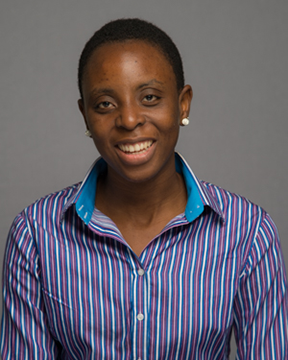Equitable Partnerships in Action

Because we’ve been at this for so long with APHRC, we now talk conceptually and dream of how to change the world before there is money for it. Fostering an environment of trust between individuals and institutions makes big change possible.

Onikepe Owolabi
Since its founding, Guttmacher has grounded its work in partnership. We sat down with Dr. Caroline Kabiru, Head of the Sexual, Reproductive, Maternal, Newborn, Child and Adolescent Health Unit at the African Population Health and Research Center (APHRC), and Dr. Onikepe Owolabi, Guttmacher’s Director of International Research, to learn what an equitable partnership looks like in practice.
APHRC and Guttmacher have been collaborating for nearly 20 years. Tell us how the partnership began and how it has evolved.
ONI: APHRC has been one of Guttmacher’s longest standing partners, and that precedes many people who have held my role. Our relationship started in a more traditional way. Because we’re based in the United States, we had most of the funding and subgranted to APHRC. But over time, our relationship has moved into a much more balanced one, where APHRC subgrants to us as much as we subgrant to them, and we build our projects collaboratively.
CAROLINE: Historically, it was critical for us to partner with Northern organizations that had more access to funding. Over time, as we built our profile, we had the capacity to seek the same funding ourselves. When I joined APHRC in 2007, we were working with Guttmacher on a project to understand HIV risk among youth, and in 2012, we partnered again to undertake a study to measure the incidence of abortion in Kenya. The good partnership experience informed our decision to reach out to Guttmacher when we got funding to do similar work in Sierra Leone and Liberia. I think we all benefit when you can return to the same partners with whom you’ve had a good record.
So, the power dynamics of who held the funding shifted, and that has put both organizations on the same level. How do you explain that need to funders who are used to granting more traditionally to a single organization?
ONI: Typically, you’re approaching a partner because there’s a funding opportunity. But because we’ve been at this for so long with APHRC, we now talk conceptually and dream of how to change the world before there is money for it. We have frequent check-ins to say, “Hey, what are you seeing from your research?” And if we see an opportunity, we can ramp up and plan together.
Some organizations navigate these barriers by opening field or satellite offices. Why do you think it’s important to build these relationships with local partners instead?
CAROLINE: Partnerships with local institutions are essential for us at APHRC because local organizations bring critical knowledge about the local context. I’m Kenyan, but I manage projects in Burkina Faso and Malawi. If we didn’t undertake the project jointly, I could start a project, design it and then realize it doesn’t apply because I’m coming at it with a Kenyan lens. The local community would say, “This is a well-designed research approach, but after it’s complete, you’re leaving us with a problem. Why not design something that will benefit us long after you go?” That local knowledge and need for partnership has to be valued.
ONI: It’s the same for Guttmacher. We try to be respectful of a particular sociopolitical context by working closely with partners on the ground. In our work with APHRC, we have both committed to the process of learning to work together and building trust. In our interactions, we are careful to ensure that colleagues from both organizations have equal opportunity to express how the partnership is formed and how it is carried forward. Fostering an environment of trust between individuals and institutions makes big change possible.
Building those long-term relationships really maximizes the impact of the research for the local population. Can you share an example of how that’s looked in practice for you both?
ONI: Caroline mentioned the abortion incidence study. When I started at Guttmacher, we reached out to APHRC because we were thinking of doing a follow-up, and we had funding. But APHRC told us it wasn’t the right time. The original study still had a lot of traction and policy relevance. So together we thought of a different research design, and we were able to go back to the funder with the research question that was right for that time.
The new study measured maternal morbidity in Kenya. That’s a topic that is very hard to research. APHRC was very inclusive in helping us seek out local obstetricians to design the clinical aspect of this study, because even though I’m trained as a physician, I have not worked in Kenya. I remember APHRC being available at very odd hours of the day and providing us with access to clinical staff to talk through some of the most challenging cases via WhatsApp. We did the study hand in hand, and at the end of it, we both reached a decision on how we wanted to analyze data and write the publications.
CAROLINE: I always say that publications are a good sign of the nature of a partnership because we sit in a space where almost all projects are led by researchers from the Global North. Working as equals with Guttmacher and the Kenya Ministry of Health was essential for the success of the abortion incidence study. When it came time to publish, all three organizations coauthored the report. And that’s how it should be, because the problems we are trying to solve can’t be addressed from one perspective or skill set, or by one organization working alone.
In 2015, nominated by Guttmacher, APHRC won the prestigious United Nations Population Award, which recognizes outstanding achievements in population and health. Three years later, nominated by APHRC, Guttmacher received the same award.
You can learn more about Guttmacher’s impact in our 2024 Impact Report.

